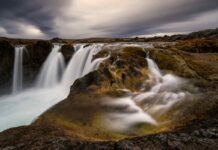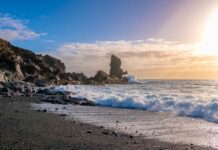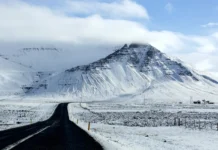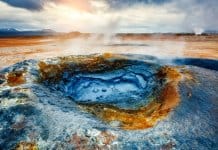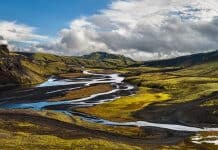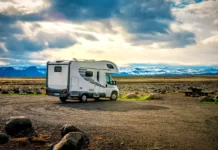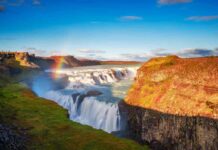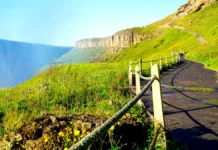Some people love it, others hate it. But nobody can deny that there is something special about winter, especially in a place like Iceland. I mean, who doesn’t love a cup of hot cocoa, watching movies and snuggling with a soft, cozy blanket? All the while watching the rain spatter the windows and the wind blow hard. Ok, sorry! I really enjoy the winter. Anyways, the indoors during winter are lovely, comfortable and warm. Conversely, winter outdoors is extreme, fun and entertaining. This is especially true when it comes to Iceland. In order to make the most of your trip, here are some helpful winter travel tips for Iceland during its cold period.

Plan Ahead of Time
This might sound a little obvious. But in fact, there is no such a thing as obvious when traveling.
The best thing that you can do when visiting a country, whether it is your first time or not, is to book ahead of time. This cannot be stressed enough for Iceland. The number of tourists every year is triple the population. So if you book right before your trip starts, you will have a hard time finding for available accommodation or a vehicle. Some services fill up over six months in advance, can you believe it?
Even your tours must be booked ahead of time, as you do not want to be left behind when a tour of the ice caves or a whale watching excursion is about to depart. Even though it’s not high season, booking ahead is still a good Iceland winter travel tip.
Always Have a Backup Plan
There might be times when the weather will put a kibosh on your travel plans. You may have to delay traveling to your next destination. When deciding upon your itinerary, always have a Plan B and even a Plan C.
Wherever you plan to go, make sure to check local indoor activities, such as visiting breweries, museums, shops, places to eat, etc. Make a list with places of interest for each town you will see. You never know if the weather will turn or if you’ll need to change course.
Stay Connected, Stay Visible
Winter in Iceland is not as nightmarish as you might think. It’s pretty cold, but it’s not the Arctic wasteland you might be picturing. However, the wind is very strong, and if you add snow, driving can get quite difficult. This is why my best Iceland winter travel tip is to be well informed about the road conditions, the forecast, and the numbers you can reach in case of emergency. Two extremely helpful websites are the Iceland Meteorological Office (https://en.vedur.is) and the Icelandic Road and Coastal Administration (www.road.is). Check these site often to learn about road closures, storms, and severe weather warnings. If you do have an incident, the emergency number in Iceland is 112. It’s the equivalent of 911 in the United States or 999 in Britain. This phone number covers all types of emergencies, from crime, fires, and accidents to natural disasters. Call 112 when you need help in Iceland.
Other Winter Travel Tips For Iceland
One helpful piece of advice for traveling in Iceland during winter is to make sure to add GPS and WiFi to whatever vehicle you choose. On a related driving safety note, most rental companies will add studded tires to your reservation, so that is one less thing to be worried about.
Also, an updated physical map is always a good idea, and why not? And throw in a cute little compass to give you an old school vibe while rocking it in the Land of Fire and Ice!
I’m also sure that whoever is at home will be worried about you and they would love to know where you are. I just found a couple of apps that will allow your loved ones to see exactly where you are. You just have to share your location with them. I think it is a good way to keep your family calm, as they’ll be able to follow your every move (should you choose). So be careful where you go!

Pack the Right Winter Gear for Iceland
Last but not least, this is one of the most relevant travel tips when visiting Iceland during the winter season. Knowing what to wear will make your life so much easier! Our small, stormy island is very humid, rainy, windy and cold. That’s why it’s important to know exactly what to how to dress.
Footwear
You must choose the right shoes when you come here. In other words, make sure to get a pair that is of waterproof, heavy duty, and durable! There are some brands that also offer stain proofing if you want to keep your shoes neat and clean. Although it might be a bit hard to keep them clean while hiking and exploring.
To go along with your hiking boots, also look for an ice or snow cleat. This will be very helpful if you want to go explore ice caves or very snowy places.
Pants and Under Layers
First of, get a base layer of durable, high-quality of long thermal underwear. Make sure it is a sweat-proof material to stay dry and warm. You want something breathable that wicks sweat and also traps heat.
For the pants themselves, you will need something that is quick-dry, waterproof, and thermal with breathable features. Again, you do not want to feel that the heat inside produced by your body is making you sweat. It will be about as uncomfortable as getting wet from the rain. Make sure it’s highly elastic. You need to be as comfortable as you can. Nothing should feel like it’s strangling you.
Tops
As for the base layer, you might want to get the same long sleeve thermal underwear here. It must be a very soft fabric and non-irritating. I would get one of those antimicrobial and moisture wicking fabrics like Merino wool.
The next layer should be something like a lightweight fleece jacket. These are very thin and are perfect to keep you dry while winter camping in Iceland. This is probably the most essential item on the list, as this one will allow you to stay warm, dry but not stuffy.
An alternative to this would be a wool sweater. Wool is a very noble and natural fabric. It’s anti-bacterial, anti-sweat and naturally waterproof with very high breathability. This is key when exploring in winter conditions. Maybe you can even pick up an Icelandic Lopapeysa sweater!
For the last layer, you’ll likely have to spend a bit of money. You need something very durable, as this is like a shield in combat against the weather.
The items mentioned above will help you stay warm and dry, but unfortunately, they won’t protect you from strong Icelandic winds! That’s why you need to get something both windproof and waterproof. Everything should be perfectly sealed yet breathable.
Finally, a good balaclava, a wool beanie (of course using your jacket’s hood) and smartphone ready gloves are essential to keep the heat inside without losing comfort.

Winter Travel Tips for Iceland
I hope this helps you enjoy our island to the fullest without worrying about the weather and conditions. And remember, planning will be your best friend, and the right clothing will be your bodyguard!


